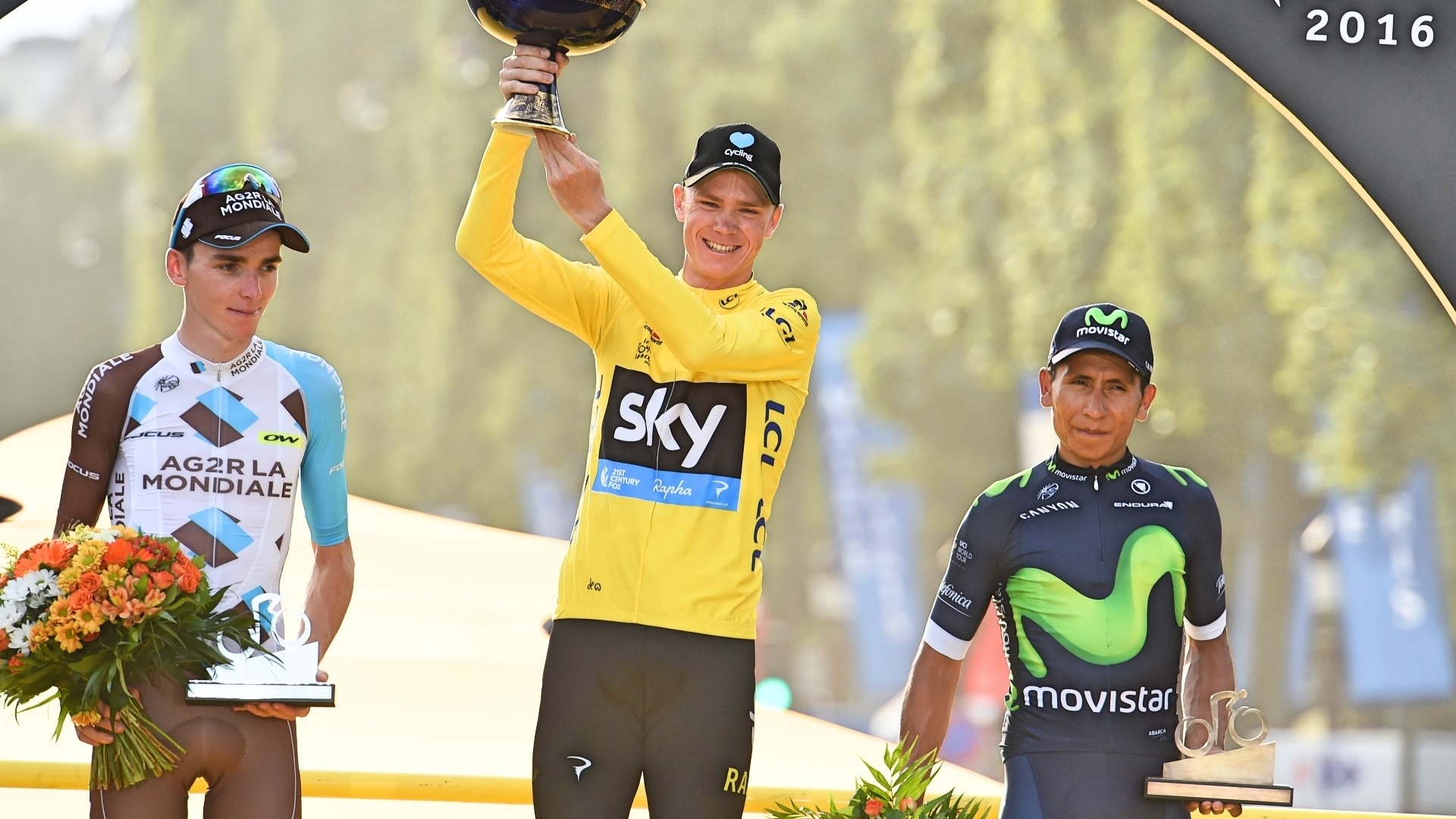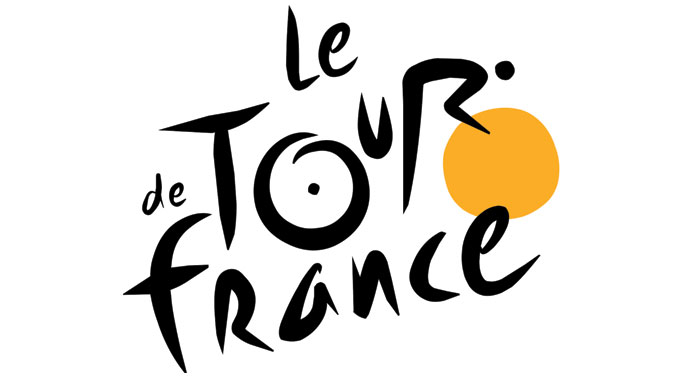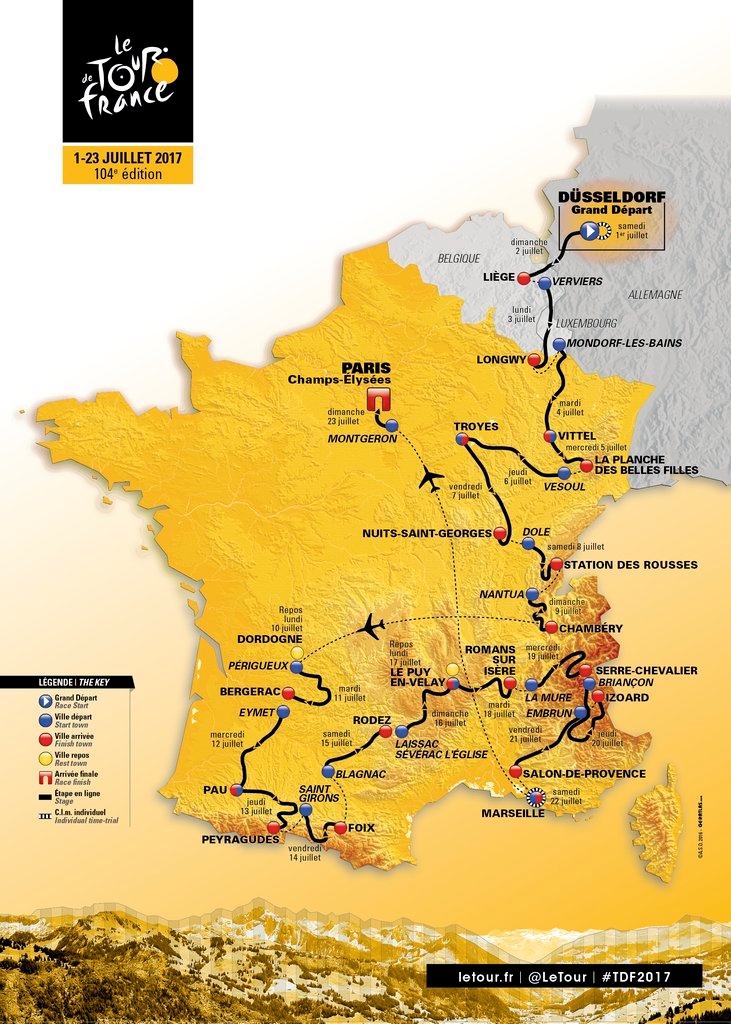The Tour de France 2017 route has been revealed, with all five of France’s main mountain regions featuring at some stage in the 104th edition of cycling’s greatest race.
Chris Froome will enter the race as defending champion, with Team Sky bidding for their fifth Tour de France win in six years, and the tough-but-balanced course unveiled in Paris could well be to Froome’s liking.
La Planche des Belles Filles, where Froome won his first Tour stage back in 2012, is the first big mountain test, while climbs such as the Col du Galibier and Col d’Izoard are highlights of the final week. While, on paper, the 2017 Tour appears to feature less climbing, organisers have opted for steeper ascents, including the steep triple-header of the Col de la Biche, Grand Colombier and Mont du Chat in the Jura mountains on stage nine.
There is also the intriguing prospect of a 23km time trial on the penultimate stage, which could result in a dramatic late twist in the battle for the yellow jersey ahead of the final processional stage into Paris.
So what can we expect from next year’s route? Where will the race be won, and where should you be watching? We’ve picked out seven key stages.














